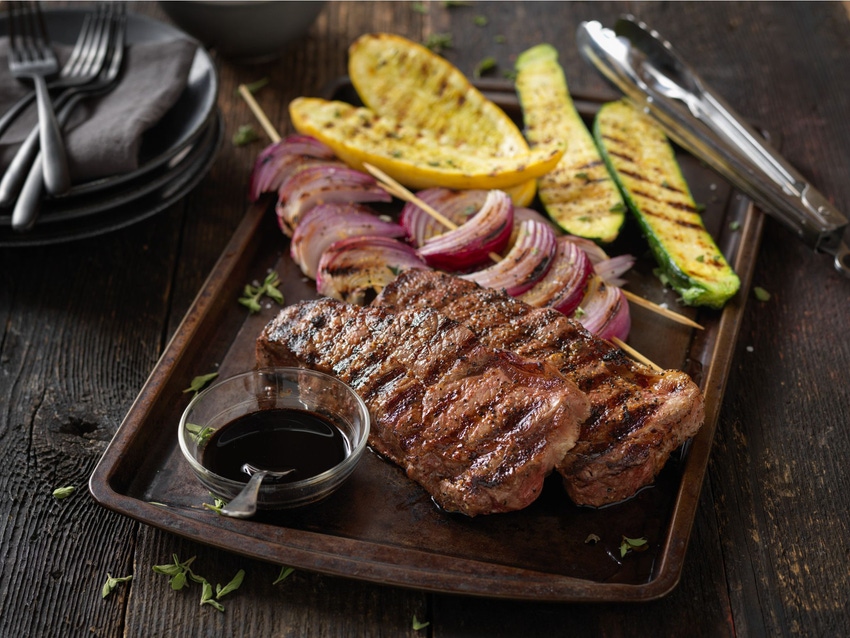World Iron Week was last week, and consumers are looking for alternatives to iron-rich beef to address anemia concerns.
September 3, 2019

Want to live to be 100? Cut back on red meat — that’s the recommendation of CNN’s Dr. Sanjay Gupta in a video segment for CNN Health titled, “Cut this food and extend your life.”
Gupta uses the usual scare tactics to encourage consumers to eliminate animal fats and proteins from their diets. In this outdated and misguided segment, he cites saturated fats and nitrates as causes of heart disease and early deaths. The short segment is another painful reminder about how nutritional messaging about beef is disregarded by dietitians and physicians and is lost in mainstream reporting.
Per usual, plant-based eating is the popular trend of the moment, but at what cost?
We know that beef is an excellent source of 10 essential nutrients that our bodies need to thrive. What’s more, this nutritional powerhouse packs a healthy dollop in a small serving.
According to Beef. It’s What’s For Dinner., “When it comes to high-quality proteins, beef provides many nutrients in a smaller serving size than some other choices (with unbeatable taste at that)! For example, you’d have to eat at least 8 oz. of cooked chicken breast to get the same amount of iron in just 3 oz. serving of cooked beef. When comparing zinc, you’d need to eat 20 oz. of cooked chicken breast!”
Last week was World Iron Week, a weeklong celebration that brings awareness of iron deficiencies and the challenges that come from being anemic.
Blogger Mikki Williden wrote a great blog post about this titled, ‘Red meat doesn’t kill you (and a problem with nutrition science),” where she cites the opportunity for producers to promote nutrient dense beef during World Iron Week.
On her blog “Eat…Enjoy,” Williden writes, “It is challenging being an advocate for eating red meat, and (in a lot of cases) encouraging clients (particularly young and not-so-young women) to eat MORE red meat, in a climate of meat avoidance. It isn’t a popular message, particularly with the bad press that red meat consumption (and production) has received over the last few years.”
In this blog post, which you can read here, Williden unpacks the errors in today’s nutritional science and reassures consumers that beef is a great, nutrient-dense choice that is not going to kill you.
Wanting to learn more about World Iron Week, I googled it, and one of the first articles I saw was titled, “I’m scared to eat beef. But how do I get enough iron?”
While she does offer a list of plant foods to obtain non-heme iron from, Leslie Beck, dietitian and BodyScience Medical national director, explains how beef is a great source of iron. She writes, “Beef has more iron than many other foods and the type of iron it contains – called heme iron – is well absorbed by the body. Three ounces of sirloin steak, for example, provides half a day's worth of iron for men and postmenopausal women. (Men and women over 50 require eight milligrams of iron each day; younger women need 18 mg.)”
Even the American Red Cross — who tests blood donors for iron levels every single day — recommends meat and eggs as the best source of iron and explains how heme iron (found in foods like beef) is the most effective source to address anemia concerns.
According to the American Red Cross, “Food has two types of iron — heme and non-heme iron. Heme iron is found in meat, fish and poultry. It is the form of iron that is most readily absorbed by your body. You absorb up to 30 percent of the heme iron that you consume. Eating meat generally boosts your iron levels far more than eating non-heme iron.
“Non-heme iron is found in plant-based foods such as fruits, vegetables and nuts. Foods with non-heme iron are still an important part of a nutritious, well-balanced diet, but the iron contained in these foods won’t be absorbed as completely. You absorb between two and 10 percent of the non-heme iron that you consume.”
While I don’t think that iron is the hot topic concern with consumers right now, I do think that nature got it right with beef. Forget supplementing or eating buckets of spinach. A three-ounce serving of beef has exactly what our bodies and brains need to thrive. And that’s a message worth sharing, don’t you think?
The opinions of Amanda Radke are not necessarily those of beefmagazine.com or Farm Progress.
About the Author(s)
You May Also Like





